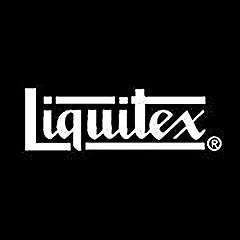Liquitex
Liquitex is a company that supplies art materials, focusing exclusively on the development, manufacture, and distribution of acrylic paints. In 1955, Permanent Pigments, a company founded by Henry Levison, created the first water-based acrylic paint, along with the first acrylic gesso. That same year, Levison decided to reorganize the company under the name "Liquitex". In 1956, the company starting selling "Soft Body" acrylic paints. In 1963, "Heavy Body" paints were available with a thicker consistency. The company offers the largest number of acrylic paint products in the world.[2][3][4]
 | |
| Industry | Arts and crafts |
|---|---|
| Predecessor | Permanent Pigments Company (est. 1933) |
| Founded | 1955 |
| Founder | Henry Levison |
| Headquarters | Cincinnati, Ohio |
| Products | Artist materials |
| Parent | Colart[1] |
| Website | Official website |
History
Liquitex was birthed from the Permanent Pigments Company, established in 1933 by Henry Levison. Permanent Pigments was a small, family-owned business located in Cincinnati that focused on developing oil paint.
In 1955, Levison developed a quick-drying, water-emulsified acrylic polymer resin. In selecting a name for the new product, Levison chose "Liquitex" as a portmanteau of "liquid" and "texture". The name was based on the character of the medium, which was a liquid base, quick drying and easily used to create texture in artwork.[2]
In 1950, Henry Levison, along with other professionals in the art materials industry, established the National Art Materials Trade Association, now known as the International Art Materials Trade Association. It was the first trade organization in the world that focused on promoting and sustaining the manufacture, distribution, sales, and training in the use of art materials.[2]
In 1964, Binney & Smith acquired the Liquitex brand, eventually selling it in 2000 to its present owner, Colart.[1][5]
Products
| Product | Options |
|---|---|
| Paints | Liquitex Professional Paint Markers Liquitex Professional Spray Paint Liquitex Professional Soft Body Acrylic Paint Liquitex Professional Heavy Body Acrylic Paint Liquitex Professional Acrylic Ink! Liquitex Basics Liquitex Basics Matt |
| Mediums | Gesso Fluid mediums Gel mediums Effects mediums Additive mediums Removable and non-removable varnishes |
| Brushes | Professional brushes Professional knives Basics brushes |
Notable adopters of acrylics
Helen Frankenthaler and Andy Warhol were early adopters of Liquitex acrylic paints. David Hockney switched from oils to acrylics after Liquitex made a less liquid medium in 1963 (High Viscosity Artist Color).[6]
Liquitex is used by mural artists like Thomas Hart Benton. Abstract expressionist artist Robert Motherwell switched to acrylic paints due to his use of large amounts of black, a color that (as oil paint) takes an especially long time to dry. He continued to use oil paint for some work, but mostly used acrylics after the mid-1960s.
References
- "Brands". ColArt. Archived from the original on 2012-09-15. Retrieved 2012-09-01.
- "About Us". Liquitex. Archived from the original on 2016-03-15. Retrieved 2012-09-01.
- "How Good are Liquitex Heavy Body Acrylic Paints?". Acrylicpaintreview.com. Archived from the original on 2012-07-22. Retrieved 2012-09-01.
- Anna Brunt. "Product launch | Digital agency london | Drupal development London". Catchdigital.com. Retrieved 2012-09-01.
- "Company History: Since 1903 the Binney & Smith Crayola brand continues to grow, with new products based on value, technical innovation, high quality, consumer satisfaction, and of course, colour and fun!". Crayola.co.uk. Archived from the original on 2013-01-03. Retrieved 2012-09-01.
- Ball, Philip. Bright Earth: Art and the Invention of Color, Issue 7432, University Of Chicago Press; first edition, April 15, 2003. ISBN 978-0226036281